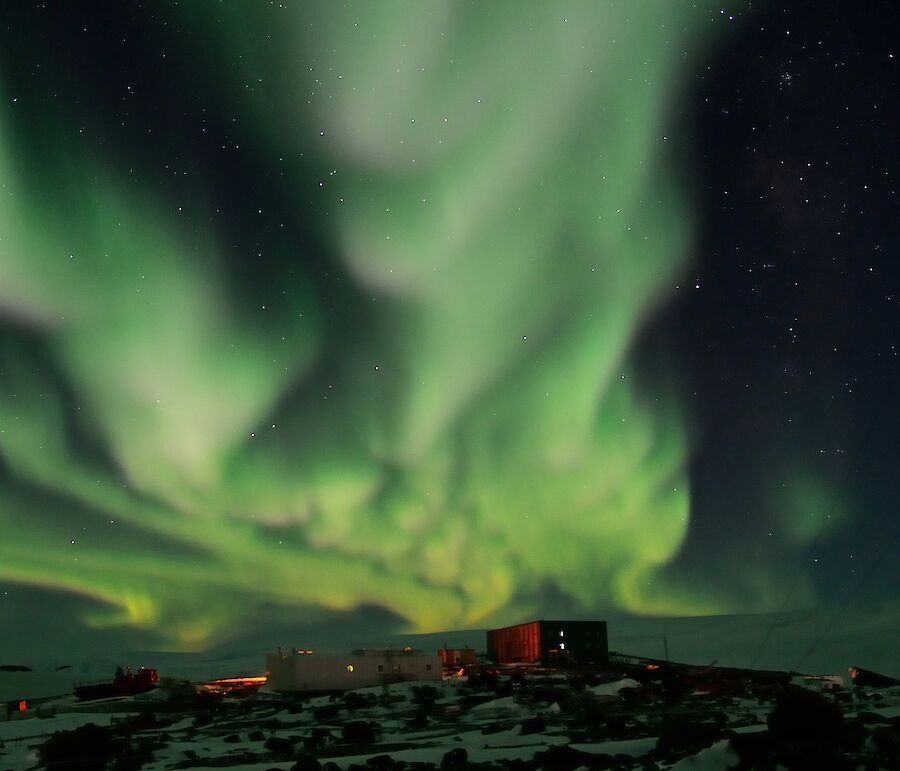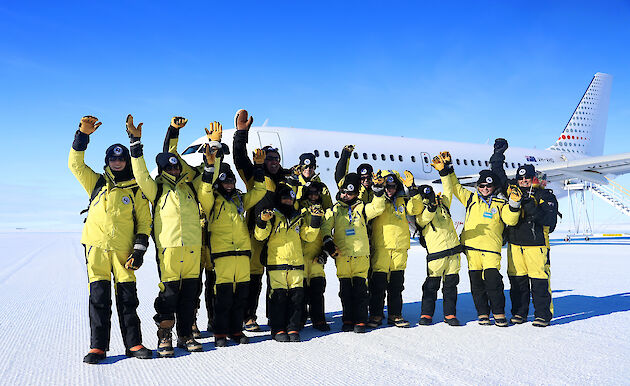
03
What’s in a name?
The word 'nuyina’ (pronounced noy‑yee‑nah) means ‘southern lights’ in palawa kani, the language of Tasmanian Aborigines.
The shimmering green, white and sometimes crimson curtain of light formed over Antarctica extends its beams over southern Australian skies to bewitch Antarctic explorers and Australians alike.
The name of Australia’s icebreaker, RSV Nuyina, recognises the long connection that Tasmanian Aboriginal people have with the evocative southern lights. Tasmanian Aboriginal people were the most southerly on the planet during the last ice age.
The name was proposed by Australian schoolchildren through the ‘Name our Icebreaker’ competition, which was designed to engage Australian students and expand their understanding of Antarctica, its environment, climate, history and Australia’s role there.
The word nuyina was shared by Aborigines with government agent George Augustus Robinson, as they watched the lights together in 1831 near Ansons Bay and again in 1837 from Flinders Island.
Not enough remains of any of the original 6 to 12 original Tasmanian Aboriginal languages to form a full language today. Strong Aboriginal community efforts led to the revival in the 1990s of one statewide language, palawa kani, which draws on extensive historical and linguistic research of written records and spoken recordings, and Aboriginal cultural knowledge.
The adaptability and resilience of the Tasmanian Aborigines are qualities emulated by our modern-day Antarctic expeditioners as they travel south.


